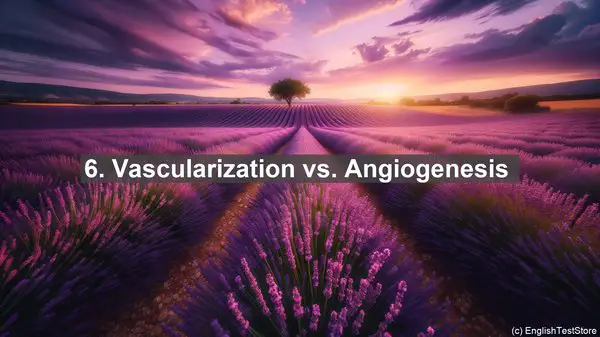Introduction
Today, we’re diving into the world of tissue engineering. While this field is fascinating, it also comes with its fair share of confusing terminology. In this lesson, we’ll be unraveling the top 10 commonly confused words in tissue engineering. So, let’s get started!
1. Scaffold vs. Matrix
One of the fundamental concepts in tissue engineering is the scaffold and matrix. While they may seem similar, they have distinct roles. A scaffold provides structural support, acting as a framework for cells to grow. On the other hand, a matrix is the extracellular environment that surrounds the cells, providing essential cues for their behavior. So, think of the scaffold as the ‘skeleton’ and the matrix as the ‘environment’ for tissue growth.

2. Differentiation vs. Proliferation
When it comes to cell behavior, differentiation and proliferation are often used interchangeably. However, they refer to different processes. Differentiation is the process by which a cell becomes specialized for a particular function, while proliferation is the rapid multiplication of cells. So, while both are crucial in tissue engineering, they represent distinct aspects of cell behavior.
3. Biocompatibility vs. Bioactivity
In the context of biomaterials, biocompatibility and bioactivity are important considerations. Biocompatibility refers to the ability of a material to coexist with living tissue without causing harm. On the other hand, bioactivity refers to the material’s ability to interact with the surrounding biological environment, often promoting specific cellular responses. So, while a material may be biocompatible, it may not necessarily be bioactive.
4. Homogeneous vs. Heterogeneous
In tissue engineering, we often encounter materials or cell populations that can be described as homogeneous or heterogeneous. Homogeneous refers to a uniform composition, where all components are evenly distributed. Heterogeneous, on the other hand, refers to a mixture with varying components or regions. Understanding the distinction is crucial, as it can impact the behavior and functionality of the engineered tissue.

5. In Vivo vs. In Vitro
When discussing experiments or studies, you’ll often come across the terms in vivo and in vitro. In vivo refers to experiments conducted within a living organism, while in vitro refers to experiments conducted outside the organism, usually in a lab setting. Both approaches have their advantages and limitations, and choosing the right one is essential for obtaining accurate and meaningful results.
6. Vascularization vs. Angiogenesis
The formation of blood vessels is a critical aspect of tissue engineering. Vascularization and angiogenesis are often used interchangeably, but they represent different processes. Vascularization refers to the formation of a functional network of blood vessels, while angiogenesis specifically refers to the sprouting of new blood vessels from pre-existing ones. Understanding the distinction is crucial for designing strategies to promote proper blood supply in engineered tissues.
7. Mechanical vs. Biological Properties
When characterizing a material or tissue, we often consider both its mechanical and biological properties. Mechanical properties refer to how a material responds to external forces, such as its strength or elasticity. Biological properties, on the other hand, refer to how the material interacts with living systems, such as its ability to support cell adhesion or promote tissue integration. Both sets of properties are important in determining the suitability of a material for a specific application.
8. Regeneration vs. Repair
In tissue engineering, the ultimate goal is to restore or replace damaged or lost tissue. Regeneration and repair are two processes that can achieve this. Regeneration refers to the complete restoration of tissue, including its original structure and function. Repair, on the other hand, refers to the formation of scar tissue, which may not fully restore the original tissue’s properties. While both processes have their place, regeneration is often the ideal outcome.
9. Immunogenicity vs. Immunomodulation
When a foreign material is introduced into the body, the immune system’s response is critical. Immunogenicity refers to the material’s ability to elicit an immune response, which can range from mild inflammation to rejection. Immunomodulation, on the other hand, refers to the material’s ability to influence or regulate the immune response. In tissue engineering, achieving immunomodulation is often desirable, as it can promote tissue integration and reduce adverse reactions.
10. Preclinical vs. Clinical Trials
Before a tissue engineering approach can be used in humans, it undergoes rigorous testing. Preclinical trials refer to studies conducted in animals or in vitro, where the safety and efficacy of the approach are evaluated. Clinical trials, on the other hand, involve human subjects and are conducted in multiple phases to assess the approach’s safety and effectiveness. Only after successful clinical trials can a tissue engineering approach be considered for widespread use.
